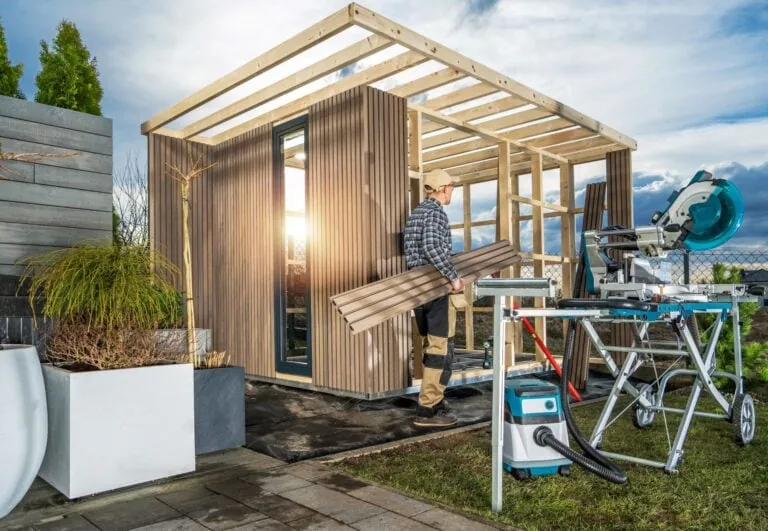A garden shed is a valuable addition to your home, providing ample space to store your gardening tools, fertilizers, and other essential do-it-yourself (DIY) supplies. These tools need protection from extreme sunlight or rain that can destroy them. As you consider buying one, you must be careful with your choice because of the wide-ranging types, each with unique pros and cons. To purchase a suitable garden shed for your home, consider the following tips:
- Consider Custom Garden Shed Options
You can buy a garden shed from reliable custom framing companies. For instance, a Duratuf Garden Shed or similar companies can come in materials like full timber or semi-timber, which withstand all weather conditions. In addition, the cedar ones are naturally attractive and add beauty and elegance to your compound. Remember, aesthetics should never be compromised, even as you aim at excellent functionality.
The good thing with timber framing for garden sheds is that they’re environmentally friendly, withstand all weather conditions, are sturdy and rigid, and you can assemble them quickly. Moreover, you can add new features like insulations, lighting benches, or shelves without compromising their structural integrity. You can think about the design you want and explain the details to reliable customizers to have them make a custom shed.
2. Check The Size And Shapes Of The Shed
Before buying a garden shed, consider the size and shape. This ensures that the shed is spacious enough to accommodate all your gardening tools and equipment, especially the bigger ones like lawnmowers. It’s best to measure the tools you’ll be storing in the shed to get an idea of the minimum dimensions of the shed. Likewise, your yard’s size should be considered to ensure your desired shed fits perfectly without hampering movement.
The shape of your shed also matters. Some are square, while others are rectangular, hexagonal, or circular. Your choice of shape is primarily subjective; pick what looks fantastic in your eyes and enhances your home’s exterior beauty.
3. Choose The Right Shed Material
Garden sheds can be made from various materials, each with unique pros and cons. Below are typical garden shed materials with a brief outline of their strengths and shortcomings.
- Wood: Wooden garden sheds are aesthetically pleasing. You can choose from various wood types, like redwood or cedar. Additionally, you can customize timber sheds to fit your garden’s decor. However, it requires regular maintenance, like treating the wood to prevent rot and decay.
- Metal: It’s more durable and requires less maintenance. A metal shed is usually made from galvanized steel, resistant to rust, fire, and corrosion.
- Plastic: It’s the most affordable option and is made from vinyl, which is lightweight and weather-resistant. A plastic shed is simple and easy to assemble. However, it’s less durable than wooden or metal sheds and can be vulnerable to wind damage.
The suitable garden shed material can also help ensure your garden tools are secured from corrosion and accumulating dirt that can destroy them. Moreover, the correct one can also work well with the desired wiring.
4. The Type Of Roofing You Prefer
The roofing material is a critical consideration when buying your garden shed. Most have flat roofs, which are cheaper and simple to construct, but they can be prone to leaking if not correctly installed. On the other hand, pitched roofs are costly but give more protection from weather elements.
The most common roofing materials for garden sheds are asphalt shingles, which come in various colors and styles, and metal roofing, which is long-lasting and resistant to rust and corrosion. Felt roofing is cost-effective and made from a thick, tar-based material.
5. Consider The Number And Size Of Windows and Doors
The number and size of windows and doors in your garden shed will dictate what items you can fit into the shed. If you use it primarily for storage, windows may be optional. However, windows are essential to work in the shed or use as a kids’ playhouse.
The type of door you choose will also depend on your needs. Single doors are the most common and are usually the most affordable option. However, extra-wide equipment, like lawnmowers, may not fit through single doors. In this case, double doors can be an excellent choice.
6. Assess The Type Of Foundation
The foundation of your garden shed is essential for ensuring its stability, safety, and durability. There are several different options. For instance, a concrete foundation is the most permanent option and provides the best support for your shed. However, it’s also the most expensive and time-consuming to install.
On the other hand, a gravel foundation is more affordable, simple to install, and gives good drainage for your shed. If your yard slopes considerably, you may choose wooden foundations.
7. Check The Security Features Of The Shed
It’s crucial to consider the security of your garden shed. You wouldn’t want your valuable tools and equipment to be at risk of theft or damage. Most garden sheds have locking mechanisms, but it is crucial to ensure they’re sturdy and secure. Consider adding additional security measures, such as an alarm system.
Conclusion
A garden shed is an excellent investment if you enjoy gardening or DIY projects. It would be best to choose a shed wisely, depending on the items you plan to store. Alternatively, you can have your shed custom-made by experts Ultimately, consider the tips above to help you choose a garden shed that meets all your needs and provides you with a valuable and functional space in your garden.




